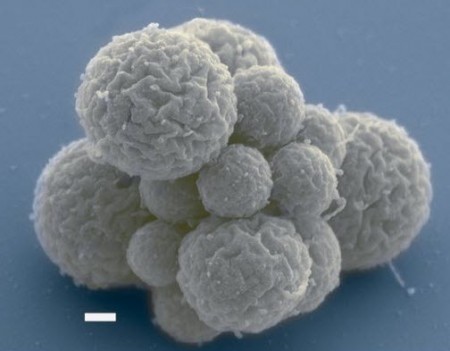March 30, 2016 – Your first questions may be:
“Why would we create synthetic life?”
“Aren’t we playing at being gods?”
For question one the answer lies in how a synthetic bacteria could be used to solve some of our more intransigent problems. For example, could it help remove carbon dioxide from the air and sequester it permanently? Could it clean up oil spills and other pollution? Could we use it to deliver targeted chemo to cancerous tumors? Could we use it to create new vaccines to fight many diseases? It would seem custom-designed microbes may prove to be an answer for many of these outstanding challenges.
For question two that answer is either yes or no depending on whether or not you put your trust in faith. Regardless synthetic biological organisms are here to stay because we have the technology to produce them. The dark side of the science could lead to biological weapons but if we don’t abuse the science artificial life could save the planet from us.
Meet Synthia seen in the picture below. This synthetic bacteria’s formal name is JCVI-syn 3.0. Synthia was constructed from 473 genes and 531,560 base pairs. The inventors come from the J. Craig Venter Institute and Synthetic Genomics, Inc.
J. Craig Venter is known for many firsts in the field of genetics. He was the first to sequence the human genome. He was the first to create synthetic life in 2010. This first synthetic organism contained 901 genes and 1.08 million base pairs. But with Synthia, Venter and his team have been able to strip excess genetic material down to a simplest construct, producing a living, self-replicating organism.
While under construction the researchers discovered that 149 of Synthia‘s 473 genes seemed to serve no distinct function. But when removed Synthia wouldn’t grow. The 149 which we might have referred to as “junk” DNA it turns out serve a purpose. The lesson learned we can apply to the many strands of DNA to which we have yet to assign useful functions. To continue to call them “junk” is surely a misnomer.
Putting Synthia in perspective, how does 473 genes compare to the human genome? We humans are made up of single cells containing 24,000 genes, comprising 3 billion base pairs, stored and duplicated on a twin set of 23 chromosomes. Each of us comprises 100 trillion cells differentiated in more than 200 types. Synthesizing Synthia comparatively is not complicated. Synthesizing one of us on the other hand is not likely something that science will be able to do for the foreseeable future.
But what we can do based on the arrival of Synthia on the scene is to begin assembling synthetic life to serve humanity. Venter believes that through synthetic living systems we have a multipurpose tool to help solve 21st century problems whether environmental or health related.
To read the research article “Design and synthesis of a minimal bacterial genome,” announcing Synthia’s arrival, you’ll find it at the link provided here for the journal Science, Volume 351, Issue 6280, published on March 25, 2016.













[…] 21stcentech.com […]